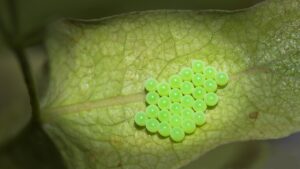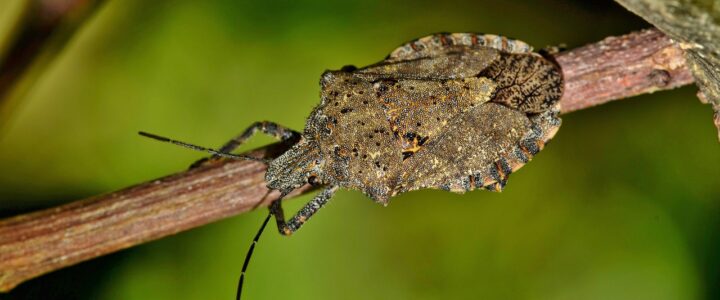
What is a stink bug, you ask?
Well, in case you haven’t heard, there’s a mysterious new insect in town. Well, it’s not exactly “new” in terms of its place on the evolutionary scale of time. But it’s “new” in terms of the fact that it has mysteriously just emerged on the North American continent only within the past couple of decades.
Prior to this point in time, for thousands of years, stink bugs have only been known to live within the domestic regions of the Asian subcontinent, primarily in Taiwan and Korea.
So fret not, for if you had never seen a stink bug before until just recently, then you are not alone. This particular species of insect is, in fact, new to the North American continent. But somehow or the other, the very first generation of stink bugs was discovered in the United States.
And “ground zero” of the first ever official sighting of stink bugs on record in the United States happens to be Allentown, Pennsylvania back in the year 1998. Nobody knows exactly how the first wave stink bugs came to the United States. One can only theorize. The most prevalent theory is that they may have come here inadvertently as stowaways aboard a freight ship while importing goods from Asia. There is clearly no way that they could have flown here from there. So they would have had to have been transported here by mistake.
But what exactly is a stink bug then? The official zoological name given to this species of insect by the worldwide consortium of entomologists is halyomorpha halys.
Physical Characteristics
In terms of their physical characteristics, they are most often described as looking “reptilian” in nature. This is due to the rugged, leathery, shell-like appearance of the wings on their back. But that is essentially where the similarity between stink bugs and reptiles comes to an end.
They have antennae which are used as feelers.
They have a proboscis, which they use to pierce the skin of fruits and vegetables and to suck the juices out of them.
They have six legs.
But what makes stink bugs unique, setting it apart from all other members of the insect world, is the presence of stink glands which are located on the dorsal side of its abdomen.
Unique among members of the animal and insect kingdom, stink bugs exhibit a unique behavior as their self-defense mechanism: They release a pungent odor as a means to ward off potential predators. This is essentially similar to the behavior of a skunk. This stench is by no means lethal or toxic, but it is enough to drive animals, insects, and even humans away.
Many people report that these fumes bear a strong resemblance to that of the herb known as cilantro. And rightly so, because the composition of the odor consists of trans-2-decenal, which is coincidentally also the same chemical compound found naturally in cilantro!
The Stink Bug Diet
No, we’re not talking about humans eating stink bugs (although I’m sure that would be a sure-fire way of losing weight – but that’s a whole separate topic altogether). We are talking about the dietary habits of stink bugs themselves.
Stink bugs are 100% vegan. They eat fruits and vegetables only. They will ate anything from apples to pears, tomatoes to bell peppers, and more.
The Agricultural Threat
Having said this about their diet being purely vegan-based, this calls to the forefront a very serious problem that the agricultural industry is facing in the United States: Stink bugs are destroying our crops. They will swarm in on crops and start feeding on them. They pierce the skin of a fruit or vegetable and start sucking the juices out of them, thus rendering the fruit spoiled for human consumption.
Believe it or not, this has become a priority within the highest levels of the US government, as the stink bug threat can cost potentially millions of dollars in lost revenue and lost food produce.
So what is the US government doing about the stink bug problem? What are they doing in order to quell their population growth? While a number of pesticide solutions have been tested and proven effective against stink bugs, the use of pesticides may not necessarily be the best choice. There are a number of different ways of dealing with the stink bug problem that are being explored.
Stink Bug Predators – The Food Chain
There are no known predators of stink bugs. Some household pets may try to eat them but that is highly unrealistic, considering the stench that stink bugs emanate whenever they are threatened.
The closest thing that is known to exist as a predator for stink bugs is the wasp: But rather than killing stink bugs, they will feed on their eggs that they lay.
Lifespan of Stink Bugs
Stink bugs have a lifespan of not more than 6 to 9 months on average. Yet ironically it is during this sort lifespan that they are able to multiply by hundreds each and every year, thereby resulting in the alarmingly explosive rate of population growth that we have been witnessing over the past couple of decades.
Reproductive Characteristics of Stink Bugs
Stink bugs lay eggs. Typically you will find that they lay their eggs in such a place so as to be attached to the underside of leaves on trees. And contrary to popular urban legends and myths, stink bugs do not lay eggs indoors. So you will never find a colony of newborn baby stink bugs emerging from inside your attic, basement, or within the confines of the walls of your home. They need the climate, the environmental conditions, and their surroundings to be precisely what is ideal for reproduction.
So one thing you can definitely count on is that once stink bugs start to colonize your home, they cannot multiply. Therefore, if you find that the number of stink bugs in your home seems to be increasing rather than decreasing, it is not because of reproduction, but because more and more stink bugs are aggregating in your home, which brings us to the next point:
Aggregation Pheromone
Perhaps you may have heard of the term “pheromone” in the context of sexual attraction between males and females of a particular species. Well, stink bugs have a similar pheromone, which is not necessarily used for mating purposes. It is known as an aggregation pheromone, and it is used for stink bugs to socialize with one another… to invite others to come and congregate on a particular location.
So if you find that once one stink bug gets into your home, more and more seem to be following it, it is precisely for this reason: They are emanating aggregation pheromones to attract others of the same species towards them.
Sources of Attraction
Stink bugs are attracted to sources of light and heat. This is why you will typically find that stink bugs inside your home will more often than not will be crawling on your windows. They want to go toward the source of light. During the daytime, they want to go toward the sunlight. And at night, stink bugs will flock toward the windowsills of homes where the lights are on inside.
The same applies to heat, which we will explain in further detail below.
Autumn And Stink Bugs
Did you know that the months of September and October are typically regarded as the peak of “stink bug season” in North America? Indeed, you will find that the vast majority of infestations of homes by stink bugs generally tend to occur during these two months out of the year, more than during any other months of the year, combined.
This is because it is during the onset of autumn that the atmospheric temperature in North America begins to drop and the autumnal equinox is reached, thereby rendering the number of hours of daylight to become less and less. As a result, stink bugs will begin to instinctively seek out sources of heat and light where they may take refuge to ride out the autumn and winter months.
Hibernation
Once stink bugs find a suitable sanctuary wherein they can take refuge during the autumn and winter months , they will end up going into a state of hibernation. In some cases, though, they may remain awake, due to the abundance of heat and light inside your home. So occasionally you might see stink bugs tarrying in your house, but this is less common.
How To Get Rid Of Stink Bugs Without The Stink
Getting rid of stink bugs without triggering the release of their trademark stink can be quite challenging. But there are a number of ways this can achieved. These methods typically will involve methods of stealth, such as by setting traps and what not.
Having said that, here are some tips on how to get rid of stink bugs while avoiding getting a whiff of that pungent odor sprayed on your face, arms, clothes, or your furniture.




